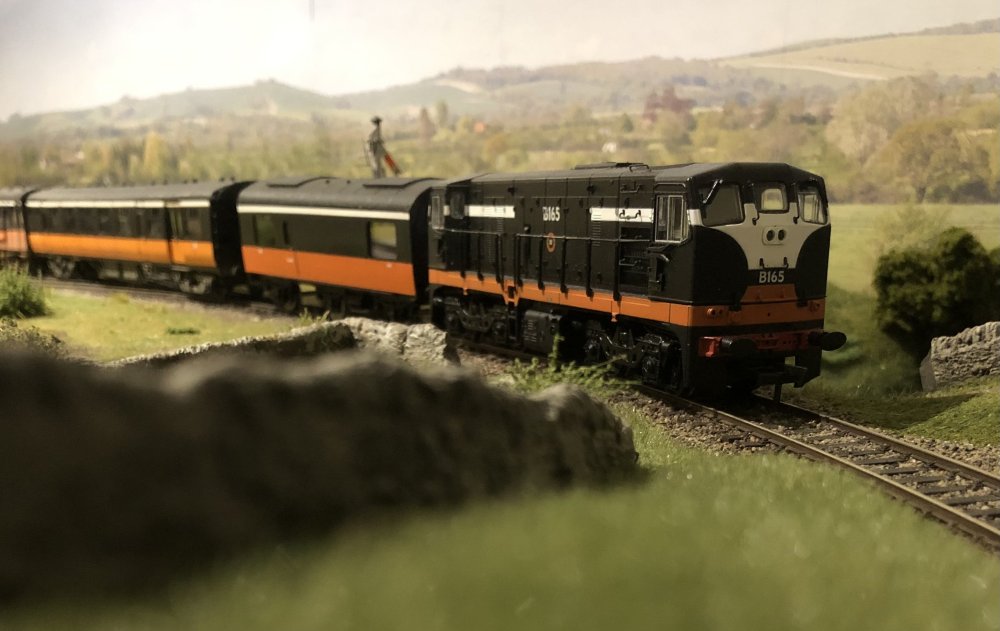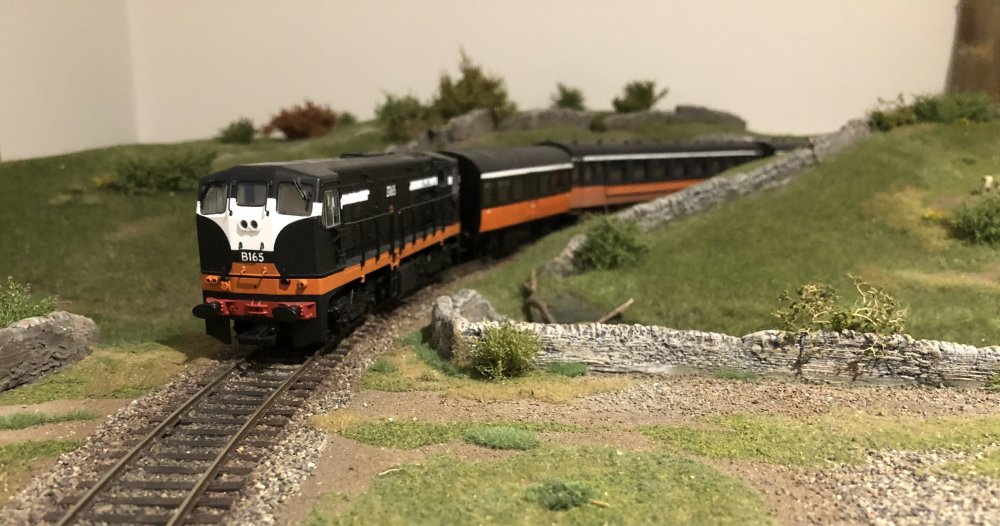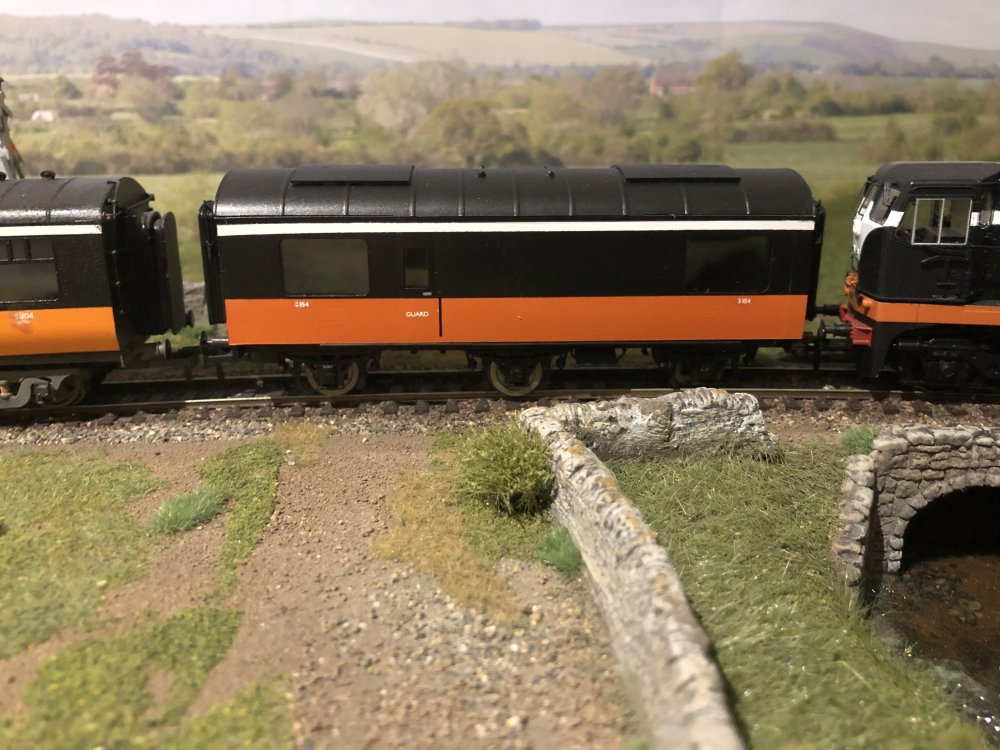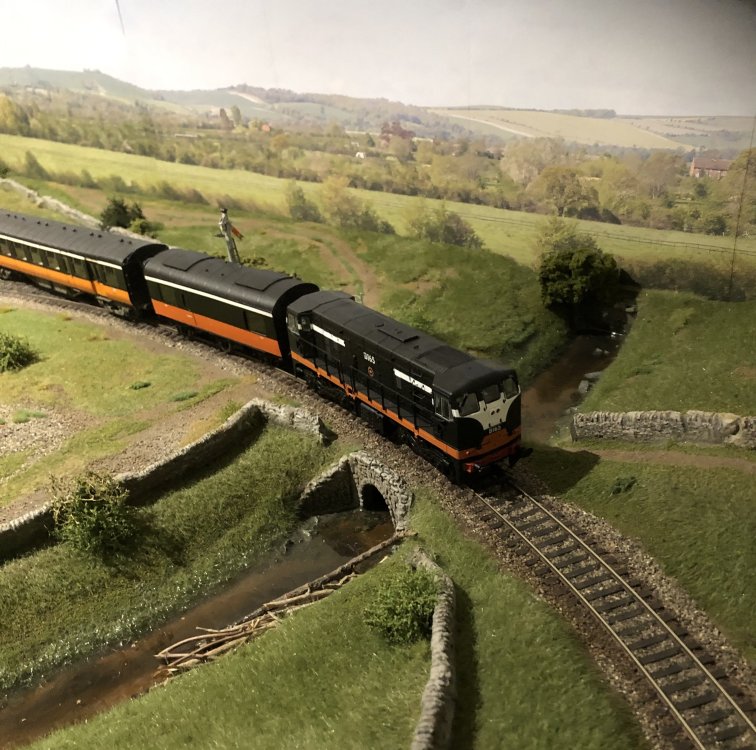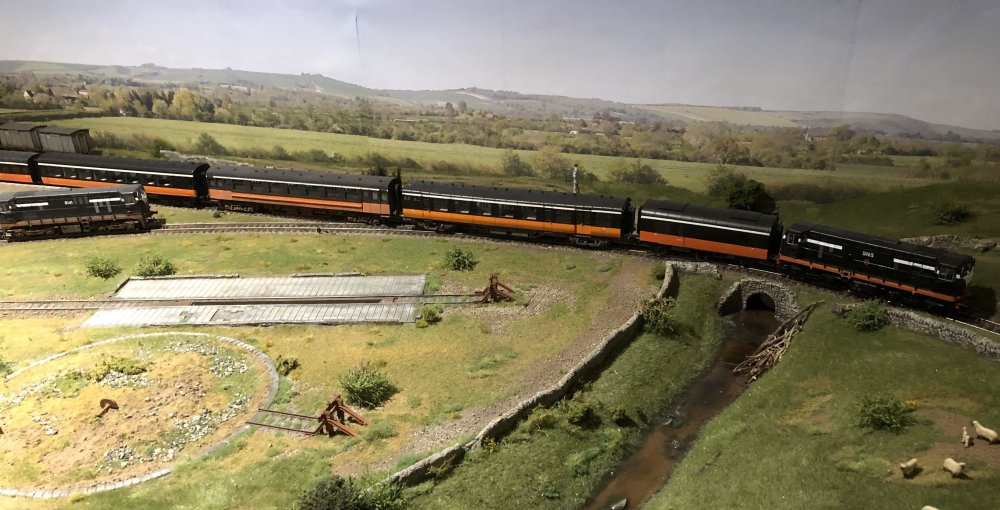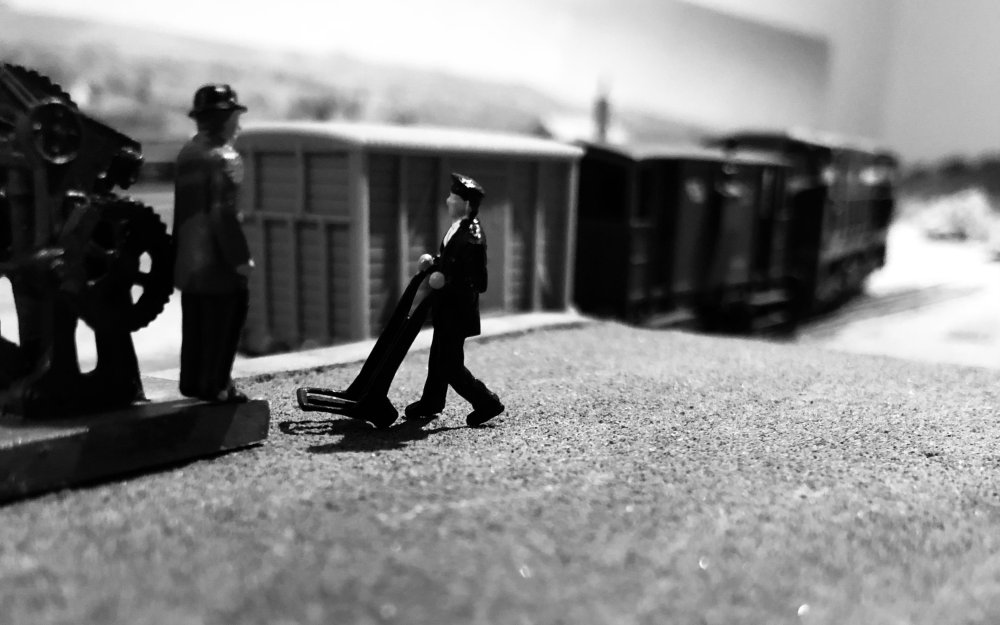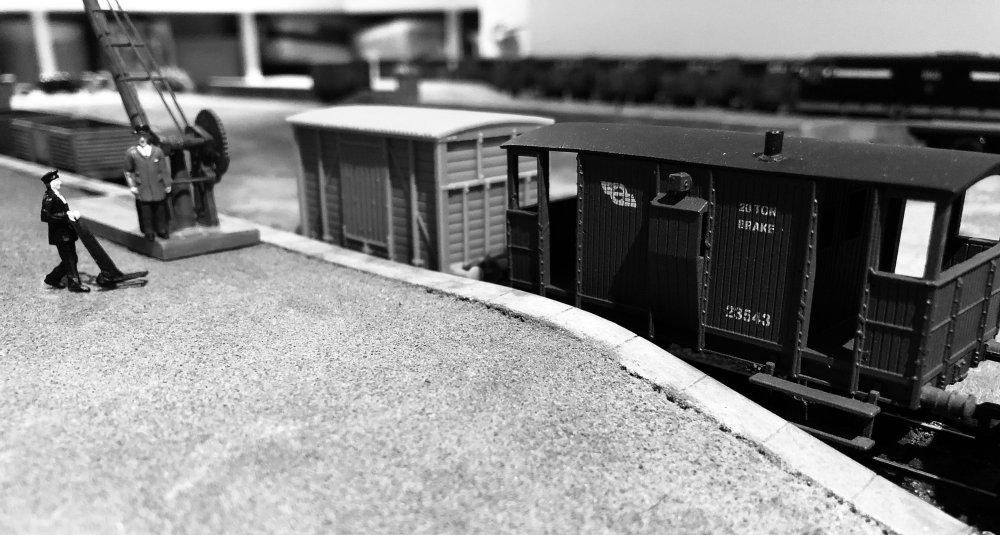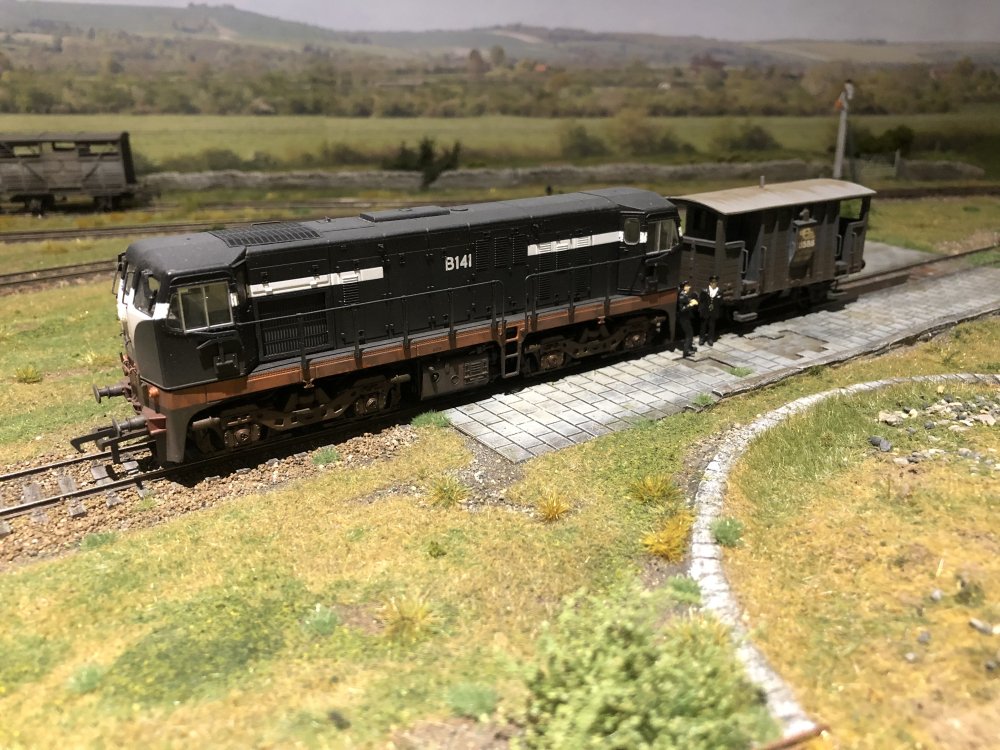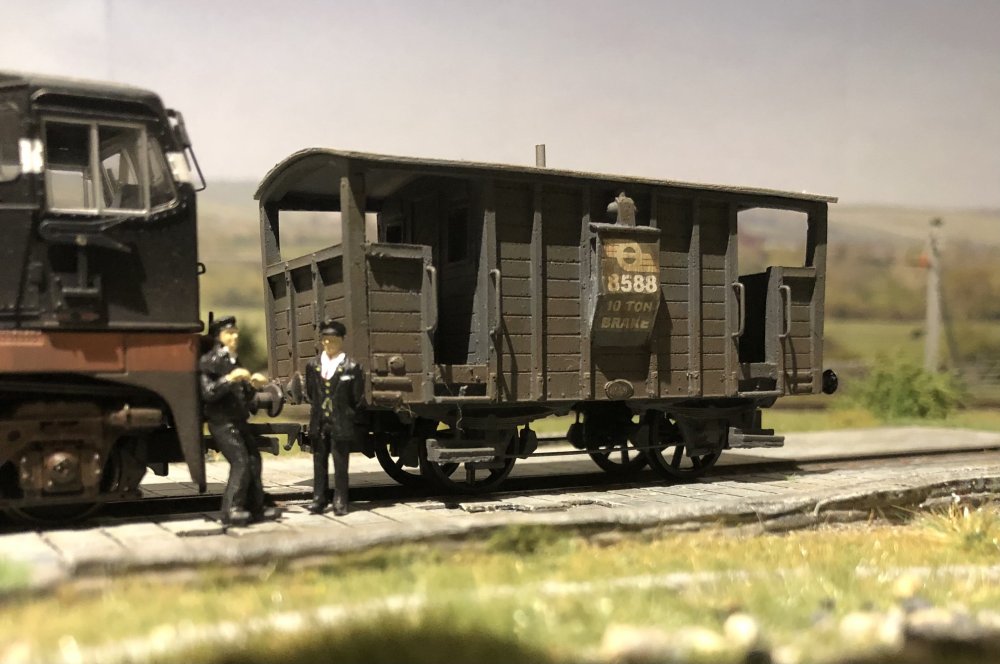-
Posts
15,934 -
Joined
-
Last visited
-
Days Won
394
Content Type
Profiles
Forums
Events
Gallery
Blogs
Community Map
Everything posted by jhb171achill
-
No, never. The first Cravens went into traffic several months after the last steam locos had stopped operating. Similarly, they never ran with a train containing six-wheelers, as these disappeared from traffic the same time as steam, March 1963; the very first Cravens were late 1963, others 1964 and up to 1967. For steam, the following carriages are suitable, in order of age: 1. Six-wheelers (by late 50s, MGWR & GSWR types - WLWR & DSER ones seem to have almost totally gone). Four six-wheeled full brakes remained, all of GSWR origin, and gained the black'n'tan livery; the last two surviving until the late 1960s. 2. Wooden bogies - by late 50s almost all of GSWR origin - a handful of MGWR and one or two DSER and WLWR. 3. Bredins - 1930s GSR 4. Early 1950s CIE - essentially Bredin design 5. Park Royals 6. Ex-GNR coaches of various types appeared on CIE from very late 1958. 7. Laminates 8. "Tin Vans" - four wheeled only - luggage vans and heating vans (the 6-wheeled heating vans appeared in 1965). Bogie generator vans are late 1960s (Dutch) and early 1970s (BR) onwards. For the DIESEL era: The "A", "B101", "C" and "B121" classes all ran with the above stock in green when new, but obviously "graduated" to more modern stock later. The 141s started life alongside the Cravens, but also would have hauled all of the above bar the passenger-carrying six-wheelers. Likewise the 181s. By the time the 071s appeared, Mk 2s had appeared, and of the above, only Cravens, Park Royals and laminates remained. The very last Bredins were withdrawn shortly before the 071s went into traffic. The quirky one, of course; the "G" class. One hauled a MGWR six-wheeled passenger brake on the Foynes line for a few weeks, and several members of the class hauled "laminate"-based 1904 and 1910 (separately) on the Loughrea branch between 1963 and 1975!
-
The demountable beet was a one-off experiment, albeit one that entered traffic. I saw it in use, in the midst of a train of "ordinary" double-deck beet wagons, at Wellington Bridge in either 2004 or 2005. The newly painted 150 was at the 1996 Inchicore Open Day, where it briefly displayed a New York piece of "bar memorabilia".......(!) The brown single deck beet wain with bits sellotaped onto the ends to make it longer....new one to me! Excellent, and rare photo.
-
New Cravens?? Wow - excellent.
-
I need to add all sorts of slime and weeds to the missing tiled area - indeed, the whole tiled area - it looks far too pristine! The signal is also irritating - it's been assembled incorrectly with the ladder the wrong side! (not by me!......)
-
Where are those carriages operating now? I want to travel in them!!!
-
British locos and stock that can be disguised as Irish
jhb171achill replied to Westcorkrailway's topic in Irish Models
While not to the taste of all (what livery is?), a "generic" repaint of a British loco as an Irish one will look more convincing if it is in the grey - as black can simply look like unlined BR! If BR had painted their engines grey instead of black and put big pale yellow numbers on them, it would be the other way round..... -
British locos and stock that can be disguised as Irish
jhb171achill replied to Westcorkrailway's topic in Irish Models
There are a number of British 0.6.0s which with little more than perhaps replacing the cab with something "Inchicore-looking" could pass off as a "generic" Irish loco. Bear in mind, if modelling is based on a "three foot rule", that the best locos for a scenario like this will almost certainly be tender 0.6.0s. yes, the LNER J72 can indeed look very MGWR "E" class - just drop it into a pot of grey paint! Many 4.4.0s also will look "half-Irish" if painted blue for GNR or grey for GSR / CIE. I have seen posts here and there of some very nice conversions of 2.6.0s or 4.6.0s into Irish versions. -
That's the sort of "back story". I remember calling at small rural stations here and there in the 1960s (and in the 1970s, Loughrea) and just standing looking at the infrastructure, sometimes well kept but sometimes very tatty looking, and just wondering "how long can this place survive?". Dugort Harbour is indeed intended to look like one of these places where threats of closure have been ongoing for decades. Had it existed in real life, the 1967 closures would certainly have put paid to it.........
-
True - and the “A”s also - need to get them chipped too. Long list of things to do, as always!
-
1966; the branch train arrives and departs again. Four passengers and 13 schoolchildren on board this afternoon. The lunchtime bus had 41 on board, as it’s 1s/6d cheaper than the train…..
-
Well, he hasn't a hope of selling them. I also heard he was looking for silly money. Even in the Emperorship of Boristan, vehicles THAT far gone are rarely rescued - though that bastion of decent British carriages*, the Isle of Wight Railway, has had some very notable and impressive successes. Even if some DID take one of those remarkable Muskerry survivors, they would almost certainly not be in a position to pay ANY money. So, like the West Clare diesels, unreasonable greed will kill them. One is falling apart as it is. (* as opposed to Mk 1 tin cans)
-
Good thinking; and that palethorpes thing might be a basis for a 6w scratchbuild….
-
Unlikely. They’re struggling for volunteers to keep operational carriages running, and allocation of a budget towards something which won’t earn a bean - after a 2-year closure with no train income - isn’t practical.
-
This little yoke has a huge aversion to staying on the rails, and refuses to do so at all if being shunted. Thoughts?
-
-
What they don't know is there will be another three of them once I get the wheels!!
-
Still have 'em, Colin; PM me.
-
Grand Canal St., of course….
-
-
“Yes, we’ll have to leave it here. Hot box, you could boil a kettle on it. Dunno why they can’t give us a decent brake van…..” ”Well, PJ says we’ll have to take the van off the goods. The cattle’s expected in North Wall for the boat…”
-
British locos and stock that can be disguised as Irish
jhb171achill replied to Westcorkrailway's topic in Irish Models
The GSR Pullman cars were a bit like De Dietrichs, 800 or the Fintona tram in that they were specific in their use and location. There were just four, and only one per train. One each was on the up and down day mails between Dublin and Cork, and Dublin & Galway. So you’re going to need Bredins and GSWR wooden stock to run with them, with a “Maedb” or a 400 or possibly a Woolwich up front. But yes, in theory, 2-foot rule, just repaint green. Also they had different window spacing, different ends, and matchboard lower panelling. Ive an idea they had different bogies too, though I’d need to check that. -
British locos and stock that can be disguised as Irish
jhb171achill replied to Westcorkrailway's topic in Irish Models
BR Mk. 1 full parcels brake = CIE “BR” genny van Plus of course, numerous Mk 2 & Mk 3 carriages…. -
I did indeed see those - the top ones look the best for my requirements. It strikes me that so many backscenes have clear blue skies! Grey & dull would seem more realistic!
-
Not sure, Ken, I’ll have a look. Senior went to school behind those little tank engines, so he probably saw them as being as routine as a Dart! if only……..! Should add, that would make a very nice little 00 scale kit.
-
Yes, it's of the same class. There were 6 or 7 of them. This one ended up with Murphy too. The rest were scrapped. I wonder if one ever went to Dugort Harbour; now THERE'S an idea - something on a plinth like No. 36 in Cork, but out in the open covered in bird.... stuff.
.png.c363cdf5c3fb7955cd92a55eb6dbbae0.png)



